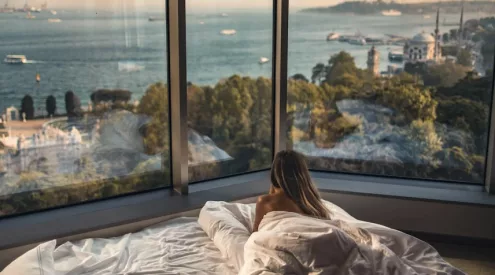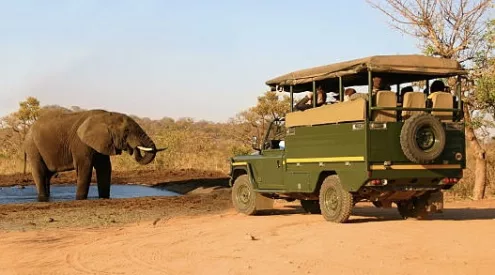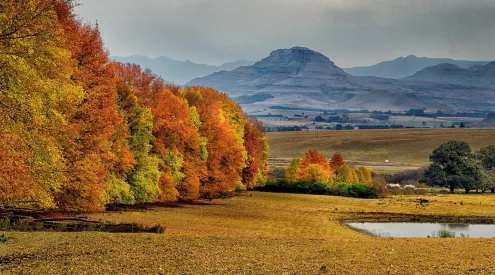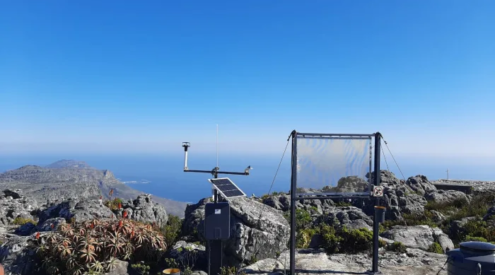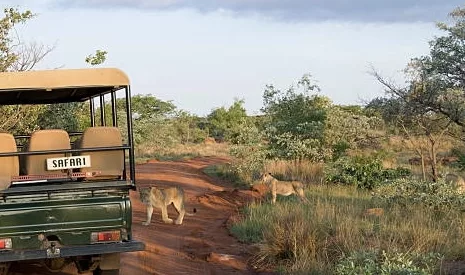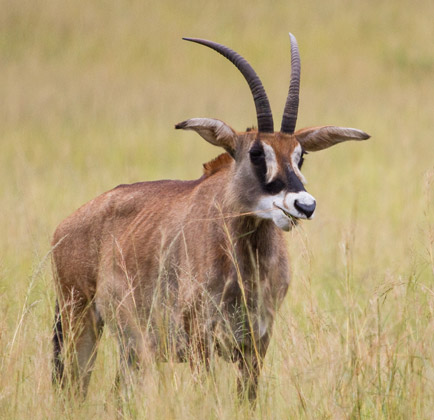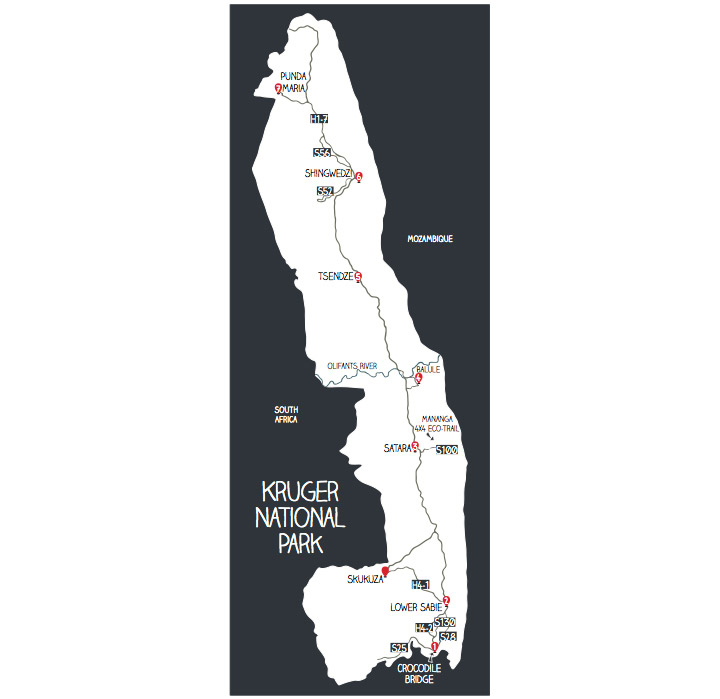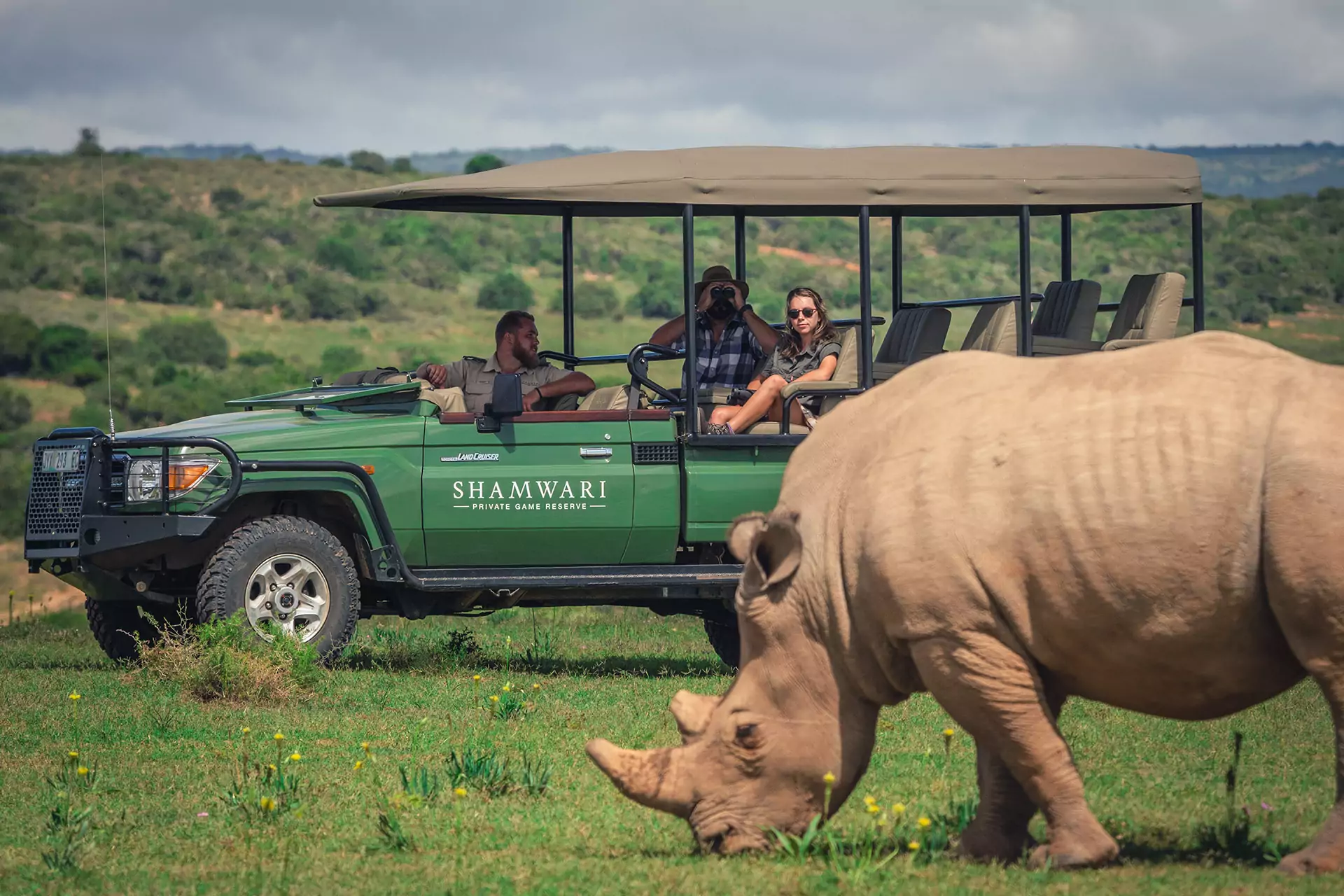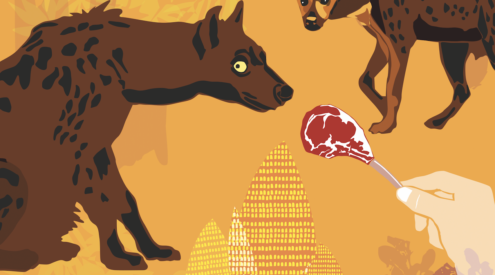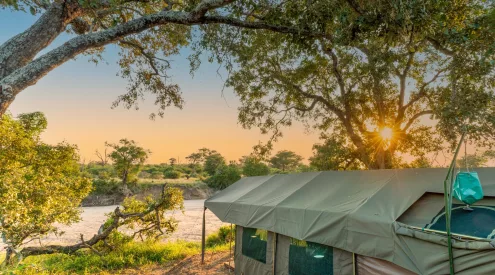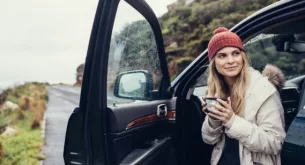Villiers Steyn and Tabby Mittins have been to Kruger National Park more than 50 times. This time they had a theory to test: does the ultimate route start south?
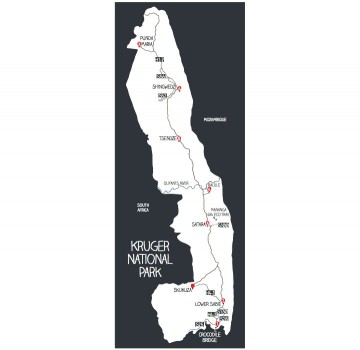
The theory
Every Kruger visitor, even the birdwatcher and tree enthusiast, wants to see the Big Five. For most, the urge for mega sightings is often so great that the colours of a lilac-breasted roller or the immensity of a mature jackalberry tree can’t be fully appreciated until a lion or leopard has been checked off the list. With this in mind, and knowing that we weren’t likely to encounter all of the Big Five in the north, we wondered what a trip be would be like if we scratched the sightings itch in the game-rich south first. By the time we crossed the Olifants River we’d then be able to sit back and appreciate the slower pace, pockets of scenery and the solitude further north.

Giraffes are especially fond of knob-thorn trees, which are very common in southern Kruger, especially in the vicinity of Crocodile Bridge.
The south is unquestionably the most popular section of Kruger National Park – for good reason: the diverse landscape is ideal for large numbers of varied game and the road network through each habitat is extensive. It’s rare to go out for a drive and see nothing. In fact, sightings are often so good that regular visitors can become blasé. ‘We only saw a couple of hyenas, a cheetah and a rhino this afternoon…’ or some equivalent is commonly overheard during evening scullery chitchat. The north, by comparison, with its more homogenous mopane landscape and less varied routes to get you from A to B, doesn’t have much of a reputation for great sightings. It’s better known for its beautiful and tranquil camps which, unlike many of the southern camps, don’t resemble teeming refugee camps. Also, chances of getting stuck in a traffic jam are minimal there. So driving south to north, against the flow, seemed a no-brainer.

A family of giraffe cross the H10 just south of Tshokwane picnic site.
But exploring a park double the length of Swaziland is no small task and without proper planning, any amount of time in Kruger can yield very little. By carefully considering which roads to drive and where to spend each night we were able to make most of what the park has to offer.
By dividing the trip into daily bite-sized chunks we found that seven days was just enough – not so large we’d exhaust ourselves, but just large enough to savour the subtle, and not-so-subtle, changes in vegetation and animal species, and to take in the enormity of what Paul Kruger envisioned more than a century ago.
The choice of accommodation in the southern and central regions of the park is substantially greater than in the north, but the field was narrowed by our objective: good game-viewing in the south; ambiance, scenery and birdwatching in the north. Skukuza wasn’t on our list, despite being slap-bang in probably the most fruitful game area of the entire park. Some enjoy the constant buzz of activity there, but we get enough of that in the city. Smaller and quieter is more our style. Berg-en-Dal is a favourite but, like Pretoriuskop, it’s tucked away in a relatively dense region on the bottom edge of the park with limited game-viewing routes. So this was our route:
NIGHT ONE
Crocodile Bridge was our starting point, not just in the interests of being thorough – it’s right at the southern tip of the park – but also because the camp straddles three habitat types: open tree savanna on the S28, great for plains game such as zebra, buffalo and cheetah; rolling granite and dolerite plains along the S25, ideal for giraffe, white rhino and lion; and Delagoa thorn thickets on the H4-2 and S130, where warier species such as kudu and black rhino hang out.
NIGHT TWO
Lower Sabie is in a similarly productive area, with the added bonus of a new Mugg & Bean overlooking the Sabie River. The H4-1 Sabie River Road is also a great road for spotting leopards.
NIGHT THREE
From there, we headed north to Satara. Although it can become very crowded, we love the highly productive game-viewing roads surrounding camp that split the traffic in four different directions. We also booked the Mananga 4×4 Eco-Trail, a 50-kilometre stretch of two-track road just north of the famous S100 gravel road. Only six high-clearance vehicles are allowed on every day and it’s one of the few places you’re allowed to stretch your legs or check for tracks on the trail.
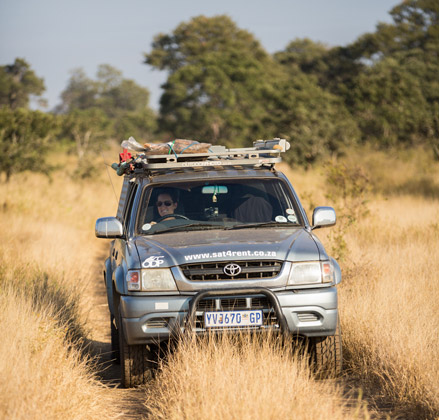
With just six spots available, you want to get onto the Mananga 4×4 Eco-Trail as early as possible. Get to Satara reception at least 15 minutes before it opens.
The ebb of noise and traffic north of Satara was a welcome relief. By this time, our appetite for mega-sightings had been sated, and this was just as well – the landscape north of the Olifants River is predominantly wall-to-wall mopane and game is scarce. There’s still plenty to see if you’re lucky – eland, roan, sable and tsessebe, hang out in the open patches of tall grass between the mopane trees and tiny Sharpe’s grysbok can be found along riverbeds. For us, a glimpse of one of the park’s rare antelope species can be as thrilling as a good lion sighting. Still, from there we mentally gave game-viewing a back seat and concentrated on everything else the park has to offer.
NIGHTS FOUR & FIVE
Two of the best places to get a good sense of Kruger’s ambience are the smaller and wilder bush camps, Balule and Tsendze. They’re close enough to take advantage of the must-see river view at Olifants Camp and the legendary Magnificent Seven’s tusks on display at Letaba’s one-of-a-kind Elephant Hall, not to mention the shops, restaurants and petrol pumps, but they’re much more rustic and closer to nature. Little things, such as the nocturnal chomping of hippos around a lantern-lit Balule and the resident owls of Tsendze – Rodgers Hobyane, Tsendze’s duty manager, will even show you exactly where to look for each species – are what make these camps so special.

Tsendze’s stands are large, level and well-shaded, and not nearly as on-top of each other as many other camps in Kruger.
NIGHT SIX
Our second-last night was spent at Shingwedzi, known for its lifesaving swimming pool (the mercury regularly hits 40 in summer!) and enormous impala lily bushes. An early-morning view from Red Rocks viewpoint on the S52 is superb, and a quiet drive through the magical pockets of riverine glades and pools along the S56 Mphongolo Loop is a much more appetising alternative to zooming up the H1-7 to Punda Maria.
NIGHT SEVEN
We’re all for saving the best for last, but it really depends on your idea of what’s best. For us it’s the small but utterly unique region of sandveld around Punda Maria, a dense, green, forested oasis that will test your tree-identifying skills to the limit – and the Pafuri Picnic Site on the banks of the Luvuvhu River further north, where you can see rare birds like African crowned eagles, black-throated wattle-eyes and even Pel’s fishing-owls. If he’s around, caretaker Frank Mabasa will happily help you look for specials around the picnic area. Where better to end off a week of great sightings, gorgeous views and the full impact of Kruger in one go than Crook’s Corner, where Zimbabwe, Mozambique and South Africa converge on the Limpopo River at the northern tip of the national park.
The verdict
Without a doubt, the south was the right place to start. I would recommend this route to anyone planning to drive the length of the park. Even though we had to squeeze our tent into the only available spot between two caravans at Crocodile Bridge and waited in line for ages for a seat on Lower Sabie’s riverside deck, we saw rhino, lion, elephant, buffalo and three cheetahs in the first 36 hours of the trip. With all our attention unabashedly focused on our search for the Big Five we were not only rewarded with unforgettable sightings, but also enjoyed them without being too bothered by the scores of people who enjoyed them with us. Halfway through the trip, we left them and the 3G signal behind and finally began to unwind. Once we’d lit the campfire under the stars in Balule, we relished the night air and the sounds of the wild that had, until then, been drowned out by the crowds. The north of Kruger is truly exceptional and can be just as rewarding as the south, albeit in a different way. The key is to go with the right mindset and expectations. Once you’ve embraced all of it in one go, it’s easy to appreciate why Kruger is our country’s favourite national park.
Plan your trip
When to go
At the height of summer the veld is lush, green and full of migratory birds and baby animals. In midwinter, on the other hand, it opens up and the waterholes get busier. There really isn’t a bad time to visit Kruger, particularly if you don’t mind (or can plan around) the crowds in the holiday season. Bear in mind that the camp gates are open for much longer hours during the height of summer (04:30 to 18:30 from November to January) than in midwinter (06:00 to 17:30 from May to July).
Getting around
It’s an all-year-round park, and still one of the most affordable in Southern Africa, and unlike a lot of others, you don’t need a raised vehicle or 4×4 to explore even the gravel roads. Although a trip such as this will add around 700 kilometres (in the park alone) to your clock, fuel supply isn’t a problem since all the main camps have filling stations.
We travelled 897 kilometres and used 120 litres of fuel.
What to take
The whole park is set up for the average holidaymaker, so all anyone really needs is a decent pair of binoculars, a park map (available in all the shops) and a good bird book or app (Robert’s VII is more expensive than Sasol eBirds, but we prefer it). The park’s shops are pretty well-stocked, although they’re not cheap, and many of the restaurants are in the process of being upgraded (mainly those in the south and central regions).
We took all our own food and only bought firewood inside the park.
Where to stay in Kruger
When it comes to accommodation, we suggest safari tents or chalets in the south and camping in the central and northern regions (where you never need to scrounge for a decent spot), but you’ve got your pick of all three throughout the park. Give yourself the best chance of staying exactly where you want by booking at least six months in advance.
Tel: 012 428 9111, www.sanparks.org/parks/kruger/tourism/accommodation.php

Look out for dwarf mongooses on or beside termite mounds next to the road – they often use them as temporary homes.
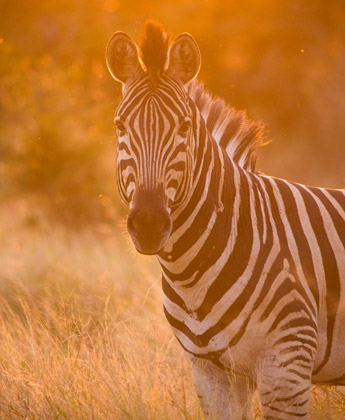
Zebras are abundant in the south-central region around Satara, where there’s relatively short grass and good visibility.
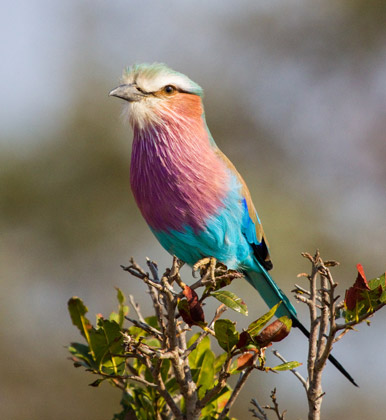
Lilac-breasted rollers are among the few bird species that will let you drive up right next to them to take a photo. If you’re patient enough, you may just catch them taking off.
This article first appeared in the September 2014 issue of Getaway magazine.

